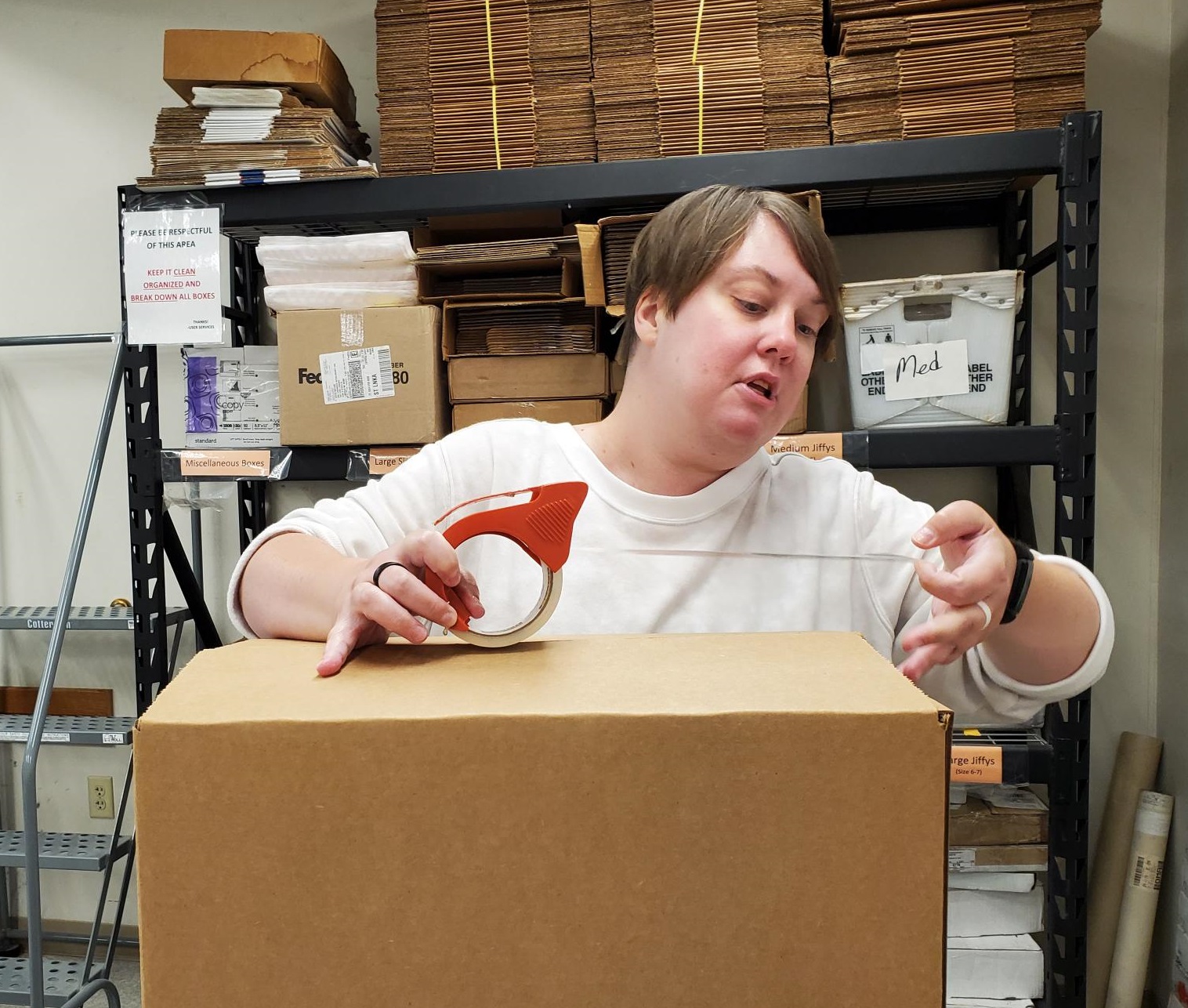
At the beginning of the 2023 fall semester the University Libraries completed a sixteen months-long labor-intensive project to identity and withdraw journal volumes from the Libraries collections and ship them to the University of Illinois to be stored and preserved as part of the Big Ten Academic Alliance’s Shared Print Repositories.
Charlene Maxey-Harris, associate dean of libraries, emphasizes that the goal of UNL’s membership in the BTAA is to expand our collections to the larger Big Collection of all libraries for our users.
“The Shared Print Repository is a shared resource for all to utilize and ensures the longevity of existing print and digital collections guaranteeing sufficient copies are retained,” Maxey-Harris said.
“Preservation of a central collection is one goal, while another is to free up space in each individual library,” Michael Stratmann, associate director, Collection Management department, said, “allowing us to concentrate on maintaining our unique collections to support and serve Nebraska faculty and students.”
The project required efforts from almost everyone within the Collections Group, Collection Management and even student employees at service points according to Erik Putens, project & database maintenance specialist, coordinated the logistics of the project.
“It took student employees almost 2 ½ months looking over lists of about 100,000 items and comparing our collections to what was needed to fill gaps in the repository module at the University of Illinois.,” Putens explained.
Libraries staff then refined the list of titles to be contributed, withdrawing the titles from the catalog, retrieving and prepping the materials for shipment, packing the volumes and documenting the shipments.
“The Libraries identified and vetted 732 titles (5643 items) that we could provide from our collections,” explained Straatmann, “The first shipment was mailed February 7th, 2023, and the last one went out August 16, 2023.”
During the project, items came from almost all library locations with 64% from Libraries Depository Retrieval Facility on East Campus and 31% from Love Library. Eleven shipments were made averaging 35 boxes per shipment with a total of 388 boxes shipped. The average number of items per shipment was 493 items and the average weight of each box was 46.9 pounds.
Libraries of the Big Ten Academic Alliance started to build Shared Print Repositories, in 2011, with the intention of collectively managing and archiving research library resources across the Big Ten. The purpose is to store and preserve lesser-used and redundant materials and serve as a permanent repository for these materials. They can be shared through the interlibrary loan service.
The first shared print repository at Indiana University holds approximately 266,000 volumes, while the second repository at the University of Illinois has a capacity of 250,000 volumes.
“Nebraska’s contribution to the first repository was relatively small, but with this project that started in 2022 – Nebraska had an opportunity to contribute more fully to the second module,” Straatmann said.
According to the BTAA, building on a network of trust, the BTAA libraries champion these efforts in order to:
• Create a more seamless network environment for users, through policies and technologies that ensure universal availability of content, enhanced discovery of resources, and generate a frictionless path from searching for resources to their ultimate delivery.
• Expand existing programs to coordinate prospective acquisitions (print and digital), building on the strengths of individual institutional collections and the purchasing power of the consortium;
• Ensure the longevity of existing print and digital collections through policies to guarantee sufficient copies are retained and through coordinated investments in preservation and digitization to ensure sustained access.